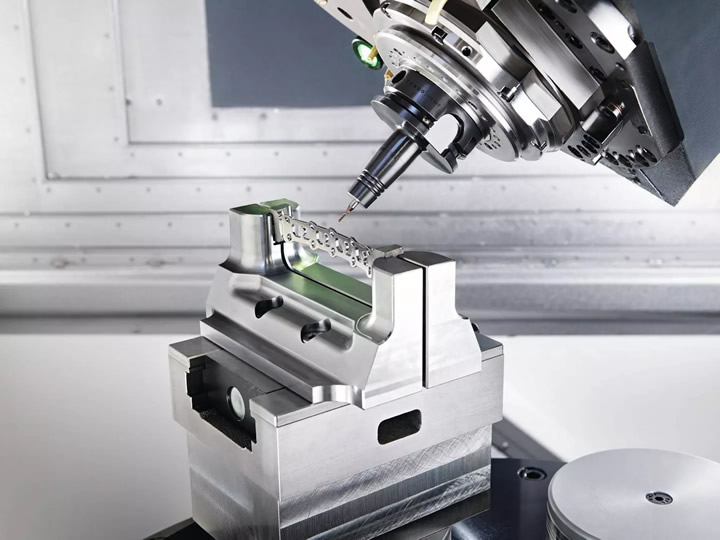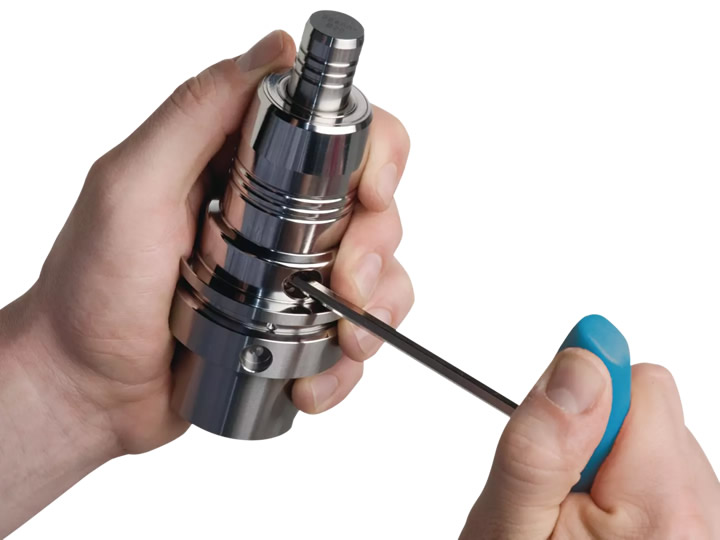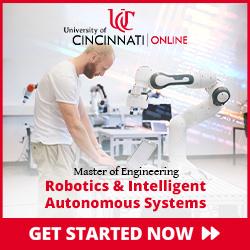It has become essential for production companies to manufacture in a climate-friendly and economical way. With process-integrated measures, pollutant emissions and the use of resources must be kept as low as possible, while protecting and relieving the burden on employees.
Longer tool service life, lower energy consumption
Article from | SCHUNK
It has become essential for production companies to manufacture in a climate-friendly and economical way. With process-integrated measures, pollutant emissions and the use of resources must be kept as low as possible, and at the same time protecting and relieving the burden on employees - because this is the only way for companies to be prepared for the tasks of the future. The hydraulic expansion technology in metal cutting companies can contribute to ecological, economic and social improvements.

Toolholders such as TENDO Silver are ideal for the entry into the world of hydraulic expansion technology. The precision all-rounder is compatible with all machine tool spindles.
The world of industrial production is changing. Decarbonization is the long-term goal in all areas of the economy and society. On the way to this goal, processes and services are being put to the test in terms of resource conservation and climate neutrality. The highest priority among entrepreneurial areas of action is to ensure future viability. The goal is set in ecological as well as economic and social terms: efficiency in all areas. Only with a careful allocation of all resources it will be possible to successfully overcome the enormous challenges of economic performance, environmental protection and social responsibility. For production companies, it is therefore inseparable that all goods are manufactured in a way that conserves resources and at the same time preserves the environment's ability to regenerate.
SCHUNK's and MAPAL's common goal is sustainability
SCHUNK, a global player and integrated partner in automation and production technology, also focuses on ecological, economic and social concerns. Sustainability, both for our own employees and for our customers, is our top priority The aim is to optimize user's processes and make them even more economical and flexible - including in metal cutting. Together with its technology partner MAPAL from Aalen, a specialist in tools, clamping devices and machining solutions, SCHUNK is working on how users can make the transition to more sustainable machining. Both companies have recognized the benefits of hydraulic expansion technology in the production area. The result: Users benefit from the technological lead in hydraulic expansion technology in ecological, economic and social issues. SCHUNK and MAPAL therefore recommend that metal-cutting companies rely on the future-proof technology of hydraulic expansion technology in production for reasons of sustainability.

The slim hydraulic expansion toolholder TENDO Slim 4ax can replace heat shrinking toolholders 1:1 thanks to the standardized outer geometry without reprogramming.
A plus for the future: hydraulic expansion technology in metal cutting
Many metalworking users have long been convinced by this technology, because it enables them to achieve economical, efficient, and resource-saving parts processing. Hydraulic expansion toolholders are available on the market for any application. Tool clamping is done by a hydraulic mechanism, where a screw is screwed in, compressing the internal pressure medium and elastically deforms the expansion sleeve. In this way, the tool shank is tightly enclosed. The high tension and radial rigidity ensure an absolutely secure hold of the tool and precise run-out accuracy.
SCHUNK and MAPAL have both decades of experience with this technology. Thanks to an application-specific, differentiated toolholder segmentation, customers receive the right hydraulic expansion toolholder depending on the application and requirements. They are finely balanced by default and are suitable for high rotational speeds. "The hydraulic expansion technology significantly supports companies in the metal-cutting industry on the way to decarbonization," emphasizes Matthias Brenner, Director Product Sales & Product Management Clamping Technology at SCHUNK. "Industry, business and society must meet the urgent demand for lower emissions, energy and material consumption," Brenner points out. "If you want to produce sustainable in the future, you have to exhaust all measures to reduce CO2emissions. This includes new climate-friendly products and services as well as reducing emissions in our own operations and in the supply chain."
"The use of hydraulic expansion technology makes a contribution to sustainable production from an ecological, economic and social perspective," emphasizes Dennis Minder, Global Head of Product and Application Management Clamping Technology at MAPAL, adding: "From a technical point of view, one advantage of the hydraulic expansion toolholders in terms of sustainability is its significantly longer tool service life. If you want to be responsible in production, you should consider the transition to hydraulic expansion technology. For new acquisitions, hydraulic expansion toolholders are the first choice when it comes to sustainability perspective."
Significant increase in workpiece quality and toolholder service life
Thanks to its design concept, hydraulic expansion technology stands for resource conservation and process reliability. The permanently precise run-out accuracy of a hydraulic expansion toolholder and the effective vibration damping thanks to the internal oil cushion, results in the best workpiece surfaces, the prevention of micro-blowouts, protection of the machine spindle, and longer tool service lives for the customer. He immediately benefits from cost savings and higher quality results. With hydraulic expansion technology, the run-out accuracy, clamping force and torque remain constant throughout the machining process. This process reliability protects both the workpiece and the operating resources, especially the tool cutting edge. Overall, reworking on both the workpiece and the machining set-up is significantly reduced.
Compared to shrink chucks, which is subjected to high stress due to constant heating and cooling, a hydraulic expansion chuck lasts significantly longer. Because material fatigue due to thermal stress does not occur here. "We at MAPAL have verified the longer tool service life though comparisons," explains Dennis Minder. While shrink chucks no longer produce the initial component quality after around 500 clamping cycles, a current UNIQ clamping chuck achieves 10,000 to 15,000 cycles - with consistent quality for the user." This longevity immediately serves to protect resources, as the metal worker can use the equipment reliably for many years. The hydraulic expansion toolholder is also impressive when it comes to servicing and reconditioning: installed parts can be replaced and the hydraulic oil can be refilled. This means it is ready for a second life and fit for another 10,000 to 15,000 machining cycles. "The hydraulic expansion technology is a highly effective key factor for efficiency and material savings," emphasizes Matthias Brenner. Avoiding rejects has an immediately positive effect on reducing CO2 emissions, as valuable raw materials already contain resources that should not be wasted. "The throwaway mentality has come to an end. This is specifically supported by a hydraulic expansion toolholder, as it is designed for a long tool service life," says Brenner.

All hydraulic expansion toolholders are extremely easy to handle. Tools can be exchanged in seconds and with micro-precision without peripheral devices.
Simple parts handling is beneficial for employee safety
And there is another argument in favor of hydraulic expansion technology: employee protection. Machine operators are grateful for simple and trouble-free handling of the high-quality toolholder, as it only needs to be inserted and screwed tight. All in all, the exchange takes only a few seconds and is nevertheless carried out with micrometer precision. No further peripheral devices are required. The short set-up times and elimination of reworking have an immediate impact on productivity and reduce labor costs. Last but not least, work safety in everyday metalworking operations is also raised to a new level thanks to hydraulic expansion technology: Burns on a hot chuck no longer occur. "A shrinking device is not only awkward to use, but also a potential source of danger," points out Dennis Minder. "And this is eliminated with the hydraulic expansion toolholder."
Significant energy savings compared to shrink chucks
In addition to durability, resource conservation and occupational safety, hydraulic expansion technology also impresses with its energy savings compared to the use of shrink chucks. The high electricity consumption that is common here, is eliminated - and with it directly associated significant amounts of CO2 emissions. "A strong argument for the transition to hydraulic clamping is the high energy consumption during shrinking," explains Dennis Minder. "Dispensing with heat shrinking eliminates all energy consumption, reduces CO2 emissions, and lowers energy costs," says the MAPAL specialist. "We have found out in our own production that a shrinking unit that is used daily in three-shift operation, consumes 10,000 to 12,000 kilowatt hours of electricity per year - so it is an energy guzzler," says Minder. "This is much more economical with the hydraulic expansion toolholders. Every reduction in energy consumption helps us on our way to achieving our sustainability goals!"
The use of hydraulic expansion technology in machining processes thus takes into account many dimensions of sustainable production - from the protection of resources, starting with the raw material, to energy and improved and less stressful working conditions for employees. The improvement of existing processes in daily business operations is one of the important factors in making product manufacturing more resource-efficient, regardless of the areas involved. It is crucial that plant operators consider all areas of resource consumption, identify any wastage and ultimately eliminate it. Even small changes in the production process can be implemented without major engineering effort and quickly have a noticeable effect. By using hydraulic expansion toolholders, users in machining operations can reduce CO2 emissions immediately, and achieve their climate targets - during operation and without costly retooling. Because the geometries of the hydraulic expansion toolholder TENDO Slim 4ax (SCHUNK) and UNIQ DReaM 4.5° (MAPAL) are exactly the same as those of heat shrinking chucks, they can be replaced 1:1 without reprogramming. Changeover never has been easier.
The content & opinions in this article are the author’s and do not necessarily represent the views of RoboticsTomorrow
Comments (0)
This post does not have any comments. Be the first to leave a comment below.
Featured Product

